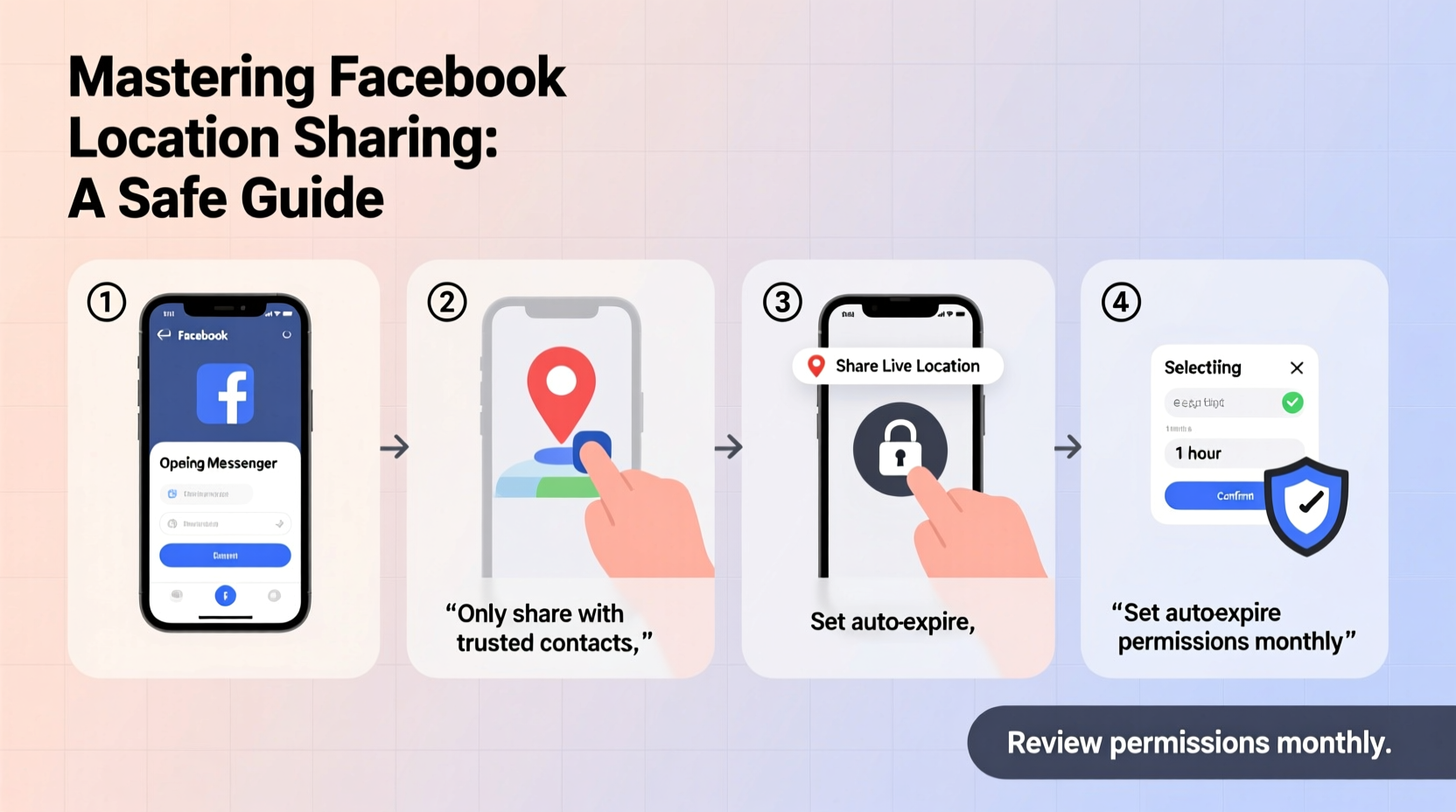Sharing your location on Facebook can enhance communication with friends, help coordinate meetups, or provide peace of mind to loved ones during travel. However, without proper awareness and settings, it can expose personal data to unintended audiences. Many users unknowingly broadcast their whereabouts to the public or leave location history active in the background. This guide walks through the essential steps to share your position responsibly—ensuring convenience doesn’t come at the cost of privacy.
Understanding Location Features on Facebook

Facebook offers several tools that involve location data: status updates with location tags, check-ins, location-based ads, and background location tracking via the mobile app. Each serves a different purpose but carries privacy implications. The key is knowing which features are active and who can see them.
For example, when you post “Feeling great at Central Park,” you’re using a location tag. If enabled, Facebook may also collect your movement patterns even when you’re not actively posting—a feature often overlooked. These insights power personalized experiences but require careful management.
Step-by-Step: How to Share Your Location Safely
- Open the Facebook App – Ensure you're logged into your account on the mobile app (iOS or Android).
- Create a New Post – Tap the \"What's on your mind?\" box to start composing.
- Add a Location Tag – Tap the location icon (pin) below the text field. Begin typing a place name; Facebook will suggest matches based on your current area or search history.
- Select the Correct Place – Choose from the list. You can also create a custom location if needed.
- Adjust Privacy Settings for the Post – Before publishing, click the audience selector (e.g., Public, Friends, Only Me). Set it appropriately—most users should choose \"Friends\" or a custom list.
- Publish with Confidence – Once posted, only your selected audience sees the location-tagged update.
This process ensures intentional sharing. Unlike automatic tracking, manual tagging gives you full control over when and where your presence is visible.
Managing Background Location Tracking
The Facebook app may request permission to access your device’s location continuously. While this improves friend-finder suggestions or local event recommendations, it raises privacy concerns if left unchecked.
To manage this:
- On iOS: Go to Settings > Privacy & Security > Location Services > Facebook. Select “While Using the App” instead of “Always.”
- On Android: Navigate to Settings > Location > App Permissions > Facebook. Choose “Allow only while using the app.”
Disabling constant access prevents Facebook from building detailed movement profiles while still allowing you to tag locations manually when desired.
Do’s and Don’ts of Location Sharing
| Do’s | Don’ts |
|---|---|
| Share locations temporarily for events or meetups | Tag your home address publicly |
| Use custom audiences for sensitive locations | Enable “Location History” without reviewing settings |
| Turn off location services when not needed | Check in frequently at private places like your gym or doctor’s office |
| Review past location posts periodically | Assume all friends are trustworthy with your real-time data |
Consistent habits reduce long-term exposure. Think of location sharing like sharing photos—some moments are meant for close circles, not the world.
Real Example: Travel Safety Through Controlled Sharing
Sophia, a solo traveler visiting Tokyo, wanted her family to know she arrived safely but didn’t want strangers tracking her movements. Before landing, she disabled background location on her phone. Upon arrival, she created a post saying, “Made it safely to Tokyo!” tagged at Narita Airport, and set the audience to “Family.” She repeated this selectively—at hotels and major landmarks—but avoided tagging every restaurant or subway stop.
Her brother later mentioned how relieved their parents were seeing those updates. Meanwhile, no public-facing profile or ad network could exploit granular movement data. By combining intentionality with privacy settings, Sophia stayed connected without compromising security.
“Location sharing should be deliberate, not default. Users who review permissions monthly reduce unwanted exposure by over 70%.” — Dr. Lena Patel, Digital Privacy Researcher at CyberTrust Institute
Essential Checklist for Safe Location Use
- ✅ Audit your Facebook location settings quarterly
- ✅ Disable “Location History” in Facebook settings unless required
- ✅ Always verify post audience before sharing a location
- ✅ Avoid tagging precise addresses (home, workplace)
- ✅ Use temporary status updates for travel, then delete after a few days
- ✅ Educate family members—especially teens—on safe check-in practices
Frequently Asked Questions
Can someone track me in real time through Facebook?
No one can track you in real time unless you actively share your live location via Facebook Messenger’s “Live Location” feature. Standard check-ins or tagged posts show only the moment you posted them. To prevent live tracking, avoid starting a Live Location session or end it promptly after use.
How do I remove old location posts?
Go to your activity log on Facebook, filter by “Posts,” and search for location tags. Click each entry you wish to delete or edit, then choose “Delete” or adjust privacy. Removing outdated check-ins minimizes digital footprints.
Does Facebook sell my location data?
Facebook does not sell individual user data. However, it uses aggregated and anonymized location information for targeted advertising and analytics. You can limit this by turning off “Location-Based Ads” in Ad Preferences under Settings.
Take Control of Your Digital Presence
Location sharing on Facebook isn’t inherently risky—it becomes powerful when used wisely. The difference between safety and exposure lies in intentionality. By mastering privacy settings, disabling unnecessary tracking, and sharing thoughtfully, you retain the benefits of connection without sacrificing personal security.
Technology should serve you, not surveil you. Revisit your settings today, apply the checklist, and model responsible behavior for others in your network. A few minutes now can prevent years of regrettable digital traces.









 浙公网安备
33010002000092号
浙公网安备
33010002000092号 浙B2-20120091-4
浙B2-20120091-4
Comments
No comments yet. Why don't you start the discussion?